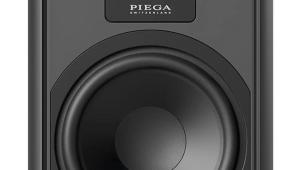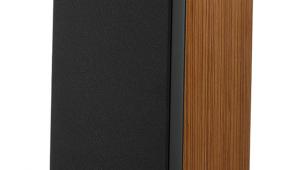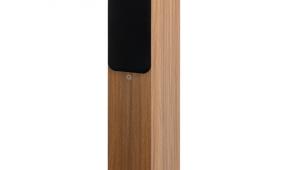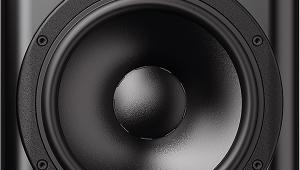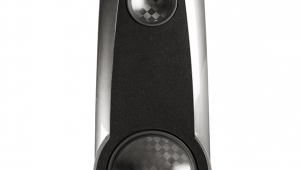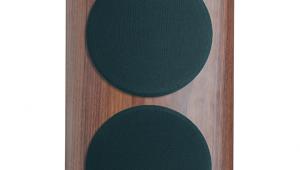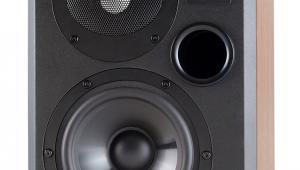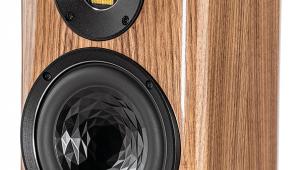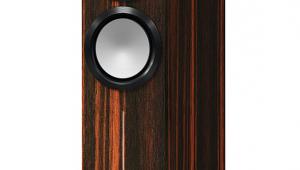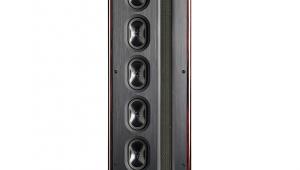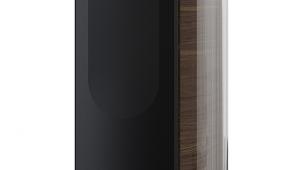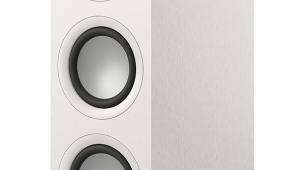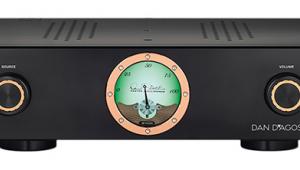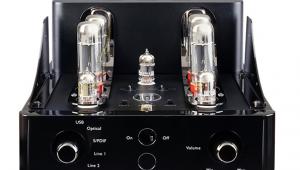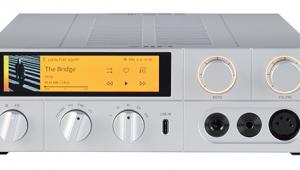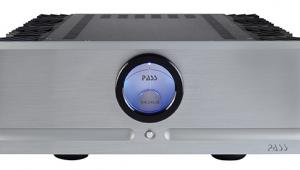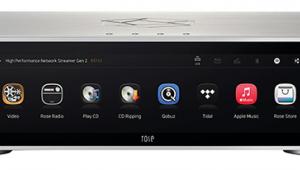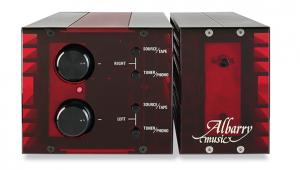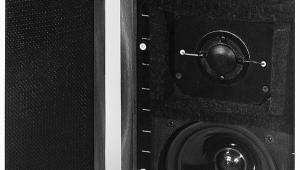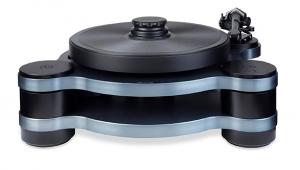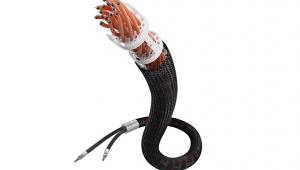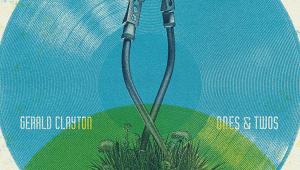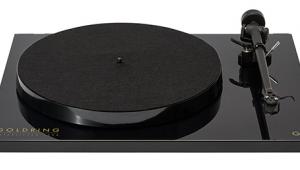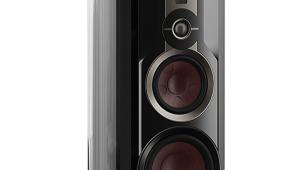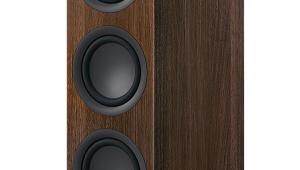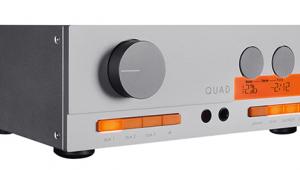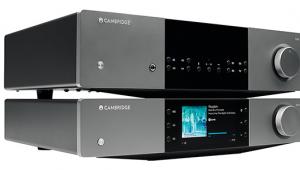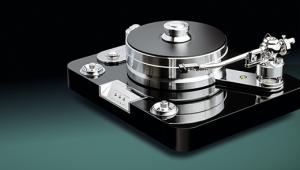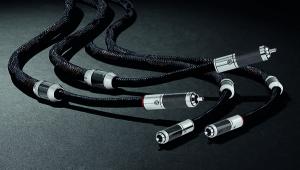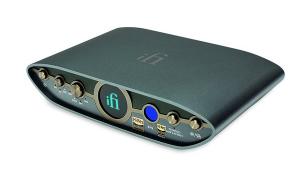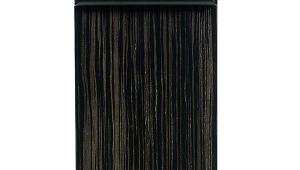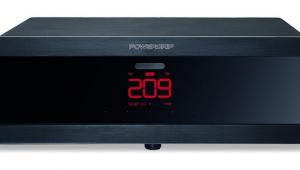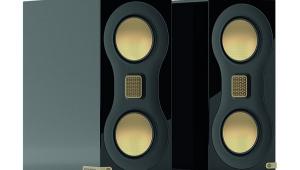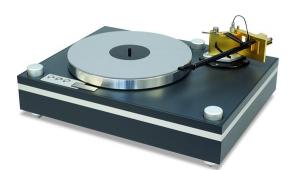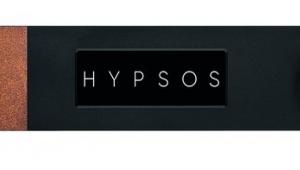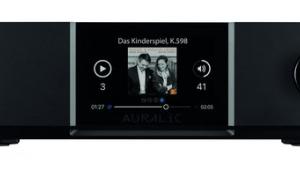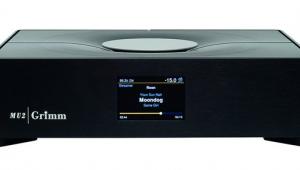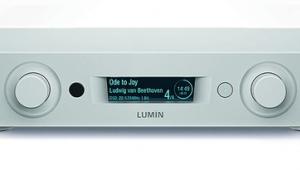Monitor Audio Studio 89 standmount speaker


As anyone who tried to buy tickets for Oasis’s 2025 reunion tour will have discovered, nostalgia is big business. The hi-fi industry knows it too, and in recent years has been scouring the 1970s for speaker and amplifier designs to either leverage into new models or directly resurrect. Monitor Audio, however, has now jumped a decade ahead, launching a new speaker ‘inspired by the 1980s’. Seeing as Hollywood has been tapping into that decade with revisits to the Beverly Hills Cop, Top Gun and Ghostbusters franchises, the British manufacturer might be onto something.
The Studio 89, selling for £2000, takes its cues from MA’s Studio series from the 1980s. Specifically, the promotional literature cites the Studio 15 standmount as inspiration [see boxout], not for any acoustic reason, but because it apes that model’s visual style by blending gold-coloured drivers with a high-gloss black finish. Note that this is the only colourway available – Monitor Audio’s last Studio bookshelf speaker, a one-off model which ran from 2018-2020, came in a choice of grey, white or black.
On the edge
The first thing you’ll notice about MA’s new model is the size of it. Off the top of my head I can’t remember seeing another speaker so slim, the Studio 89 measuring just 157mm side to side. Neither is it especially tall, at 340mm, although a depth of 361mm means it’s unlikely to ever be installed on a bookshelf, something further precluded by the speaker’s dual HiVe (high-velocity) II slot ports [see p67], with their now-familiar rifled edges.
These, one at the top and one at the bottom, combine with what Monitor Audio describes as ‘precisely calculated and positioned’ internal walls to limit potential port noise while helping tune the Studio 89’s low-frequency response down to a claimed 53Hz (–6dB) before any boundary loading [see PM's Lab Report].
Providing this low-end – and facilitating the speaker’s slender design – are two RDT (Rigid Diaphragm Technology) III bass/mid drivers featuring a three-layer construction of C-CAM cone, Nomex ‘central core’ and a woven carbon-fibre backing. Monitor Audio lists these as 4.25in (108mm) designs, although the diameter of the dimpled cone is smaller still.
Point of view
As seen on other Monitor Audio speakers, including the recent Gold 300 6G [HFN Oct ’24], the Studio 89’s bass/mid drivers’ magnets are through-bolted to the rear of the cabinet to improve rigidity. On this model the drivers are also mounted to an aluminium plate that’s isolated from the 18mm-thick MDF baffle behind it via a layer of foam suspension, with the two units sandwiching the Studio 89’s tweeter in an ‘MTM’ arrangement.
MA describes this D’Appolito layout as a ‘point source’, which is debatable, the same claim more realistically made for its top-of-the-range Hyphn floorstander [HFN Jul ’23], which places six midrange drivers around a central tweeter. Similarities to the Hyphn are more strictly observed in the Studio 89’s tweeter which is another of its MPD (Micro Pleated Diaphragm) III designs, contrasting with the more conventional C-CAM domes of the Silver and Bronze ranges.
Marshalling the output of these drivers is a third-order crossover set at 2.4kHz. The crossover network, says MA, is ‘simplicity personified’ but makes use of ‘only the very best’ polypropylene and polyester capacitors, and air-core and low-loss steel-core inductors. There’s no option for bi-wire/amping, but the Studio 89’s binding posts are sculpted to make tightening easy.

The speakers themselves are also smartly styled, with an appealing contrast between the gloss black cabinets and the gold-coloured drivers, and the small badge, with its ‘M’ logo, that graces the front. Accepting the lack of a traditional wood veneer, is the design particularly ‘1980s’? Not really – I’d argue it’s far more classy-looking than much of the products of that decade, particularly if you stump up £500 for Monitor Audio’s dedicated Studio 89 stands. These help maintain the speaker’s sleek appearance by virtue of a slim black aluminium column with integrated cable management. Four feet, adjustable for level and fitted with either metal spikes or rubber domes, screw into outriggers on the base – and each gets a gold-coloured top to match the look of the enclosures above.
Once assembled, and with the Studio 89 cabinets bolted into place, you end up with a standmount speaker that takes up precious little room or floor space. As for where to put them, however, you’ll need to head online and download Monitor Audio’s full manual, as the instructions supplied with the speakers are vague in this regard.
![]() Little belter
Little belter
While the Studio 89 has the dimensions of a ‘budget’ speaker, its performance steps up to the mark of its above-budget price tag. Standout traits include a punchy low-end, dynamic attack and good detail retrieval – ingredients that add up to a fun listen whether you’re playing a string symphony or classic rock. Best of all, however, might be the wide-reaching soundstage on offer, which ensures these compact cabinets deliver an enveloping performance.
Through the Studio 89s, driven by a Primare A35.2 power amp [HFN Dec ’19], the Eastern-tinged synth notes that kick off Rainbow’s ‘Gates Of Babylon’ [Long Live Rock ’N’ Roll; Polydor/Universal 5340480] moved smoothly and seamlessly across the soundstage with a fulsome, fluid tone. The effect was eerie as intended, implying a journey into a cavernous space before the mix becomes more centre-focused, layering Ronnie James Dio’s vocals atop a fast rhythm section here given plenty of bounce and detail. The performance wasn’t about the last word in resolution, but individual strands, from the crashing percussion to Bob Daisley’s fluent bass, were easy to discern amid the mayhem.
Big moves
Nor was Adam F’s ‘Brand New Funk’, from the compilation set Planet V [V Recordings; 44.1kHz/16-bit], an exercise in listening to fine detail, but that’s down to the music at hand – drum ’n’ bass with a funky edge designed to get the body moving rather than the mind whirring. Still, it was enjoyable to hear the speakers’ diminutive cabinets build a wide stage that extended far beyond their reaches, presenting a large spread of synths and effects from which brass notes leapt out with stabby, dynamic attack. The stuttering breakbeat rhythm that followed also snapped with vigour, in unison with an ominous bass motif carrying decent weight.
A mediocre production meant this piece didn’t sound its best at high volumes, some upper-frequency elements becoming a little coarse. Yet Joe Bonamassa’s sweetly recorded ‘Blues Deluxe’ from the album of the same name [Provogue PRD 7158 2] proved the Studio 89 can be pushed hard and not get flustered, impressing from the outset with the bite brought to the lead guitar and control over the bassline.

JB’s vocals had great texture and emotion, and were nicely positioned front and centre, but his singing isn’t the star attraction. At around the 3min 45s mark, he stamps on his guitar overdrive pedal and the band follows suit, turning the piece into an all-out, epic-scaled slab of blues rock. MA’s speakers also leapt into action, conveying the edge-of-the-seat nature of the performance thanks to their energetic sound.
Blues bliss
John Lee Hooker and Bonnie Rait’s ‘I’m In The Mood’ [The Healer; BMG download] is blues of a more intimate nature, with a mix that puts Hooker slightly to the right and back of the image, with plenty of reverb, and Rait a little to the left. The difference in vocal styles was a delight to behold, while the feel of a live performance and the space of the recording venue was aided by the Studio 89’s expansive sound. Also on show was the ability of the speakers’ bass/mid drivers to offer an authentically deep, resonant low end that some might not expect from such a slender design.
Cueing up Alice In Chains’ semi-acoustic track ‘No Excuses’ [Jar Of Flies; Columbia CD] caused me to jump a little due to the transient attack of the opening bars of percussion. This sense of directness was underpinned by the subsequent instrumentation, which the Studio 89 portrayed with plenty of clarity but little warmth. Similarly, the harmonica notes in Billy Joel’s ‘Piano Man’ [Piano Man; MFSL; 88.2kHz/24-bit] cut through almost too much above the fine delivery of Joel’s exquisite vocal, and the rolling weight of the piano.
The sound here, therefore, is arguably not as ‘crowd-pleasing’, and soft around the edges, as that of some of MA’s more wallet-friendly standmounts, such as the Bronze 100 [HFN Aug ’20]. Yet I was regularly surprised by their performance. Kendrick Scott’s ‘Touched By An Angel’, from We Are The Drum [Capitol; 96kHz/24-bit], sounded thrillingly present, those sustained notes from the discordant jazz piano decaying with grace as the Studio 89’s slowed down the pace to allow this contemplative album closer to unfurl. It was mesmerising, with insight, subtlety and scale bang on the money for these slim, lush-looking speakers.
Hi-Fi News Verdict
With the Studio 89, Monitor Audio has squeezed its latest driver technologies into a slim cabinet that’s a break from the brand norm, but will earn plenty of admiring looks. Those seduced by the 89’s size and style will be rewarded with a direct, energetic and captivating sound that goes ‘bigger’ than you might expect. Do budget for the optional stands, though, as these complete a slick all-round package.
Sound Quality: 85%
